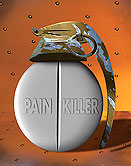
THURSDAY, July 15 (HealthDay News) — Substance abuse treatment admissions for non-medical use of prescription pain relievers have increased more than 400 percent over 10 years, according to a new government study released Thursday.
The proportion of admissions for people age 12 and older increased from 2.2 percent in 1998 to 9.8 percent in 2008, and this rise was seen in all age, gender, race and ethnic groups, as well as in people of all education levels and in all regions of the country, the Substance Abuse and Mental Health Services Administration (SAMHSA) reported.
“The non-medical use of prescription pain relievers is now the second most prevalent form of illicit drug use in the nation, and its tragic consequences are seen in substance abuse treatment centers and hospital emergency departments throughout our nation,” SAMHSA Administrator Pamela S. Hyde said in an agency news release.
“This public health threat demands that we follow the President’s National Drug Control Strategy’s call for an all-out effort to raise awareness of this risk and the critical importance of properly using, storing, and disposing of these powerful drugs,” she added.
The study, based on data from SAMHSA’s Treatment Episode Data Set, a reporting system involving treatment facilities from across the country, showed that the proportion of admission rates increased from 1.8 percent to 8.1 percent for men and from 3.5 percent to 13.3 percent for women. Rates increased from 1.9 percent to 9.7 percent for those with an eighth-grade education or less, and from 3.8 percent to 12.1 percent for those with more than a high school education.
“Our national prescription drug abuse problem cannot be ignored,” A. Thomas McLellan, deputy director of National Drug Control Policy, said in the news release. “I have worked in the treatment field for the last 35 years, and recent trends regarding the extent of prescription drug abuse are startling. We must work with prescribers, the pharmaceutical industry, and families to help us fight this scourge.”
More information
The U.S. National Institute on Drug Abuse has more about prescription drug abuse.

